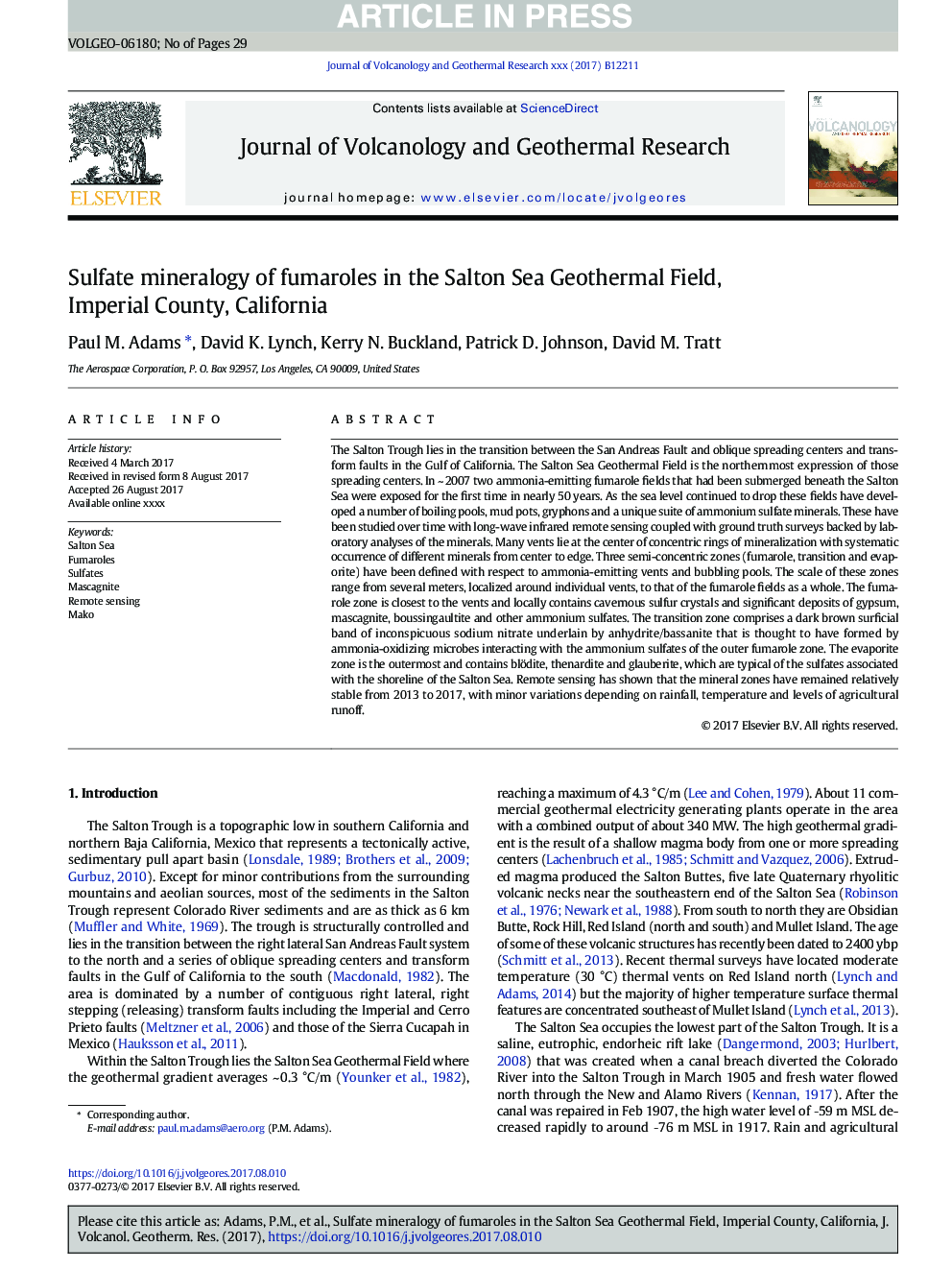| کد مقاله | کد نشریه | سال انتشار | مقاله انگلیسی | نسخه تمام متن |
|---|---|---|---|---|
| 8911449 | 1638276 | 2017 | 29 صفحه PDF | دانلود رایگان |
عنوان انگلیسی مقاله ISI
Sulfate mineralogy of fumaroles in the Salton Sea Geothermal Field, Imperial County, California
ترجمه فارسی عنوان
کانی شناسی سولفات فومارول در جتمالی میدان ساحلون، کالیفرنیا، کالیفرنیا
دانلود مقاله + سفارش ترجمه
دانلود مقاله ISI انگلیسی
رایگان برای ایرانیان
کلمات کلیدی
موضوعات مرتبط
مهندسی و علوم پایه
علوم زمین و سیارات
ژئوشیمی و پترولوژی
چکیده انگلیسی
The Salton Trough lies in the transition between the San Andreas Fault and oblique spreading centers and transform faults in the Gulf of California. The Salton Sea Geothermal Field is the northernmost expression of those spreading centers. In ~Â 2007 two ammonia-emitting fumarole fields that had been submerged beneath the Salton Sea were exposed for the first time in nearly 50Â years. As the sea level continued to drop these fields have developed a number of boiling pools, mud pots, gryphons and a unique suite of ammonium sulfate minerals. These have been studied over time with long-wave infrared remote sensing coupled with ground truth surveys backed by laboratory analyses of the minerals. Many vents lie at the center of concentric rings of mineralization with systematic occurrence of different minerals from center to edge. Three semi-concentric zones (fumarole, transition and evaporite) have been defined with respect to ammonia-emitting vents and bubbling pools. The scale of these zones range from several meters, localized around individual vents, to that of the fumarole fields as a whole. The fumarole zone is closest to the vents and locally contains cavernous sulfur crystals and significant deposits of gypsum, mascagnite, boussingaultite and other ammonium sulfates. The transition zone comprises a dark brown surficial band of inconspicuous sodium nitrate underlain by anhydrite/bassanite that is thought to have formed by ammonia-oxidizing microbes interacting with the ammonium sulfates of the outer fumarole zone. The evaporite zone is the outermost and contains blödite, thenardite and glauberite, which are typical of the sulfates associated with the shoreline of the Salton Sea. Remote sensing has shown that the mineral zones have remained relatively stable from 2013 to 2017, with minor variations depending on rainfall, temperature and levels of agricultural runoff.
ناشر
Database: Elsevier - ScienceDirect (ساینس دایرکت)
Journal: Journal of Volcanology and Geothermal Research - Volume 347, 15 November 2017, Pages 15-43
Journal: Journal of Volcanology and Geothermal Research - Volume 347, 15 November 2017, Pages 15-43
نویسندگان
Paul M. Adams, David K. Lynch, Kerry N. Buckland, Patrick D. Johnson, David M. Tratt,
